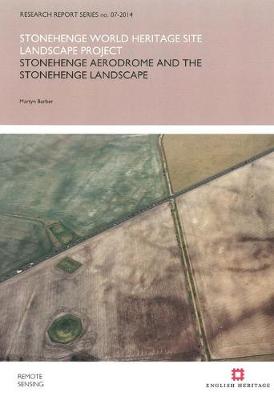Research Reports
2 total works
Between 1917 and 1921, Stonehenge had an aerodrome for a near-neighbour. Initially a Royal Flying Corps training establishment, from January 1918 it became the number one School of Aerial Navigation and Bomb Dropping, home to a contingent of RNAS Handley Page bombers. The aerodrome featured two camps either side of a take-off and landing ground, the first located close to Fargo Plantation, and a subsequent and more substantial technical and domestic site situated either side of what is now the A303, a few hundred yards west of Stonehenge. After the war, the aerodrome buildings became the focus of debate about what constituted unacceptable modern intrusions in the Stonehenge landscape. Following a public appeal the aerodrome and neighbouring farmland was purchased, the buildings dismantled and removed and thus the Stonehenge landscape was restored to something deemed more appropriate as a setting the for the monument.
Stonehenge was transformed considerably during the 20th century, the monument itself being subjected to more intervention and alteration from 1901 than at any time since the Bronze Age. Some of the most important episodes of excavation at Stonehenge during the 20th century were driven by a desire to interfere with the monument’s physical appearance, often but not always due to concerns about stability. The romantic ruin of previous generations – leaning monoliths, twisted trilithons and recumbent sarsens – was rationalised into a more upright, orderly design and secured for posterity with concrete. At the same time the visibility of the enclosing earthworks was enhanced for the paying visitor, the enclosure ditch only partially backfilled and surplus material spread across the site to conceal old trackways. 1901 was also the year that the monument was first enclosed and an admission charge introduced, both intended as means of controlling the number and types of visitor. Since Stonehenge passed into State hands in 1918, catering for the increasing numbers of visitors has also continued to play an important role in the presentation and appearance of the monument and its immediate surroundings. Viewing the recent history of Stonehenge through a narrative that sees a privately-owned and neglected 19th century ruin transformed, via essential maintenance and repair, into a unique and monumental expression of Neolithic beliefs and achievement rather overlooks the complexities of that 20th century transformation. Looking more closely at the circumstances surrounding three key episodes – the appearance in 1881 of some timber supports; the straightening and concreting of the massive Stone 56 in 1901; and the uncompleted ‘reparations’ of 1919-20 – helps to show not only why we have a more stable and secure monument today, but also that the Stonehenge of the 21st century is no closer to its prehistoric state than it was in 1901.

